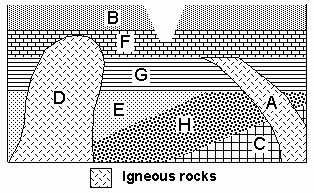 |
| https://goo.gl/VHHwCo |
Summary:
Rocks are everywhere on earth. They may seem inexpensive and invaluable since there is a lot of them, but some rocks can tell a lot about the earth. Fossils are rocks that preserve the remains of deceased organisms. There are resin fossils which preserve insects through the sap of a tree, trace fossils which document activity from deceased organisms from bite marks, footprints, etc, and body fossils that preserve the bones of dinosaurs when they were near a body of water. It is impossible to find the absolute age of the rocks, or the number of years since it formed, since the rock doesn't specify such information. Instead, you have to find its relative age based on the location and circumstances of where you found the fossil. The deeper the rock is, the older it is, unless it is a fault or a cut through the layers of rock.
SP2 - Using models:
This week I used models to help illustrate what the rock cycle looks like. The first step was to get four starbursts, and cut them into strips, then into bits. Scramble the bits and then evenly divide them into four. Next, grab one fourth of the starburst bits and crush them into your hands, molding them together to simulate how sedimentary rocks form. Then, apply heat and pressure onto the molded bits by putting the fused bits into a Ziploc bag and pressing down on it with a text book. This will simulate the formation of metamorphic rocks. The final step is to microwave the metamorphic rock for two minutes and observe the changes. This will simulate the formation of magma when the metamorphic rock melts and then the formation of igneous rocks when the melted starbursts cool down and harden. This activity helped me when finding out the age of rocks since it helped me visualize how igneous rocks are usually younger than the rocks beneath it.
No comments:
Post a Comment